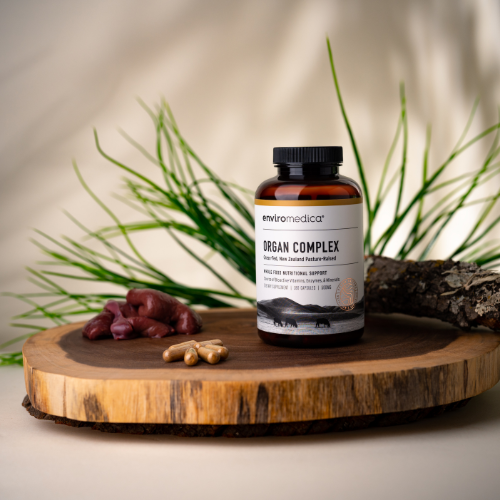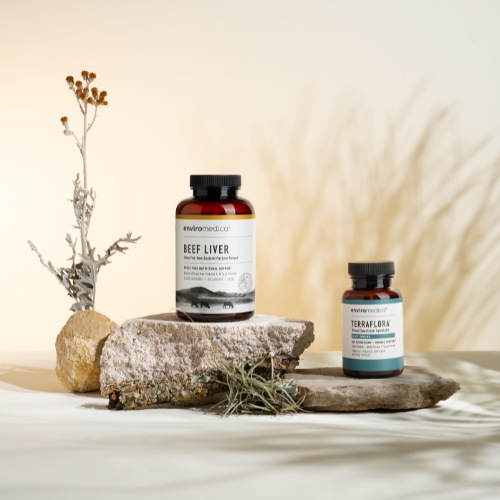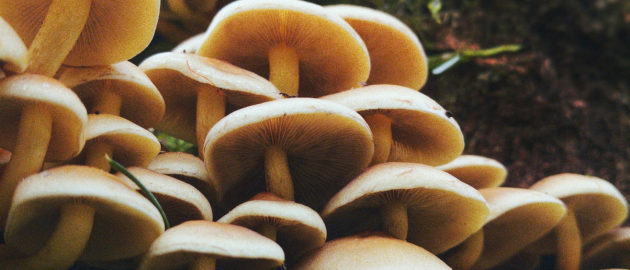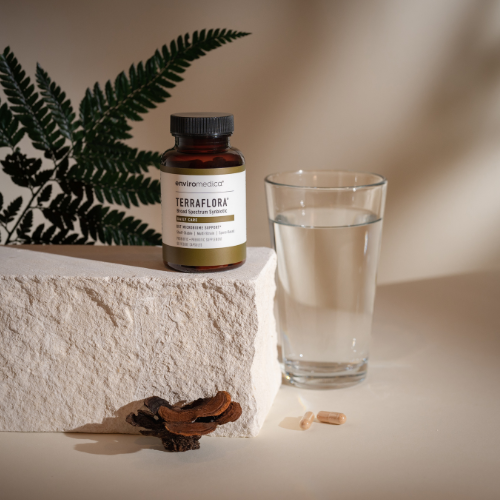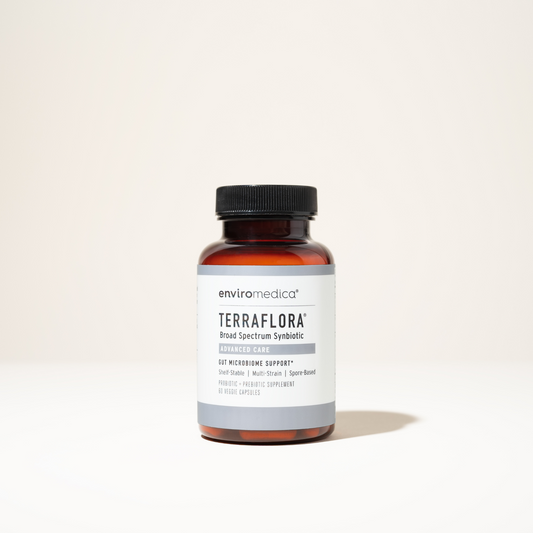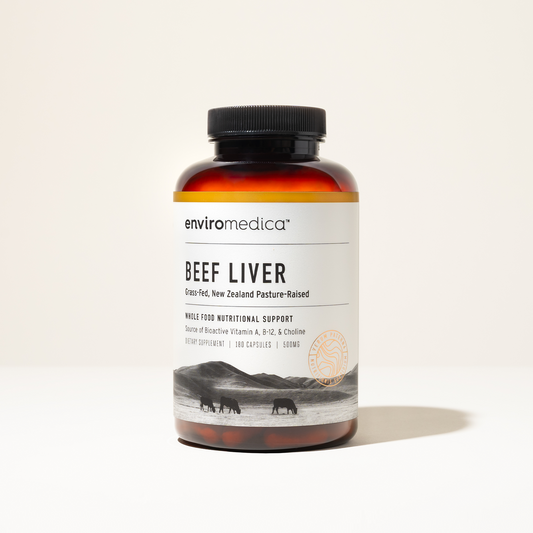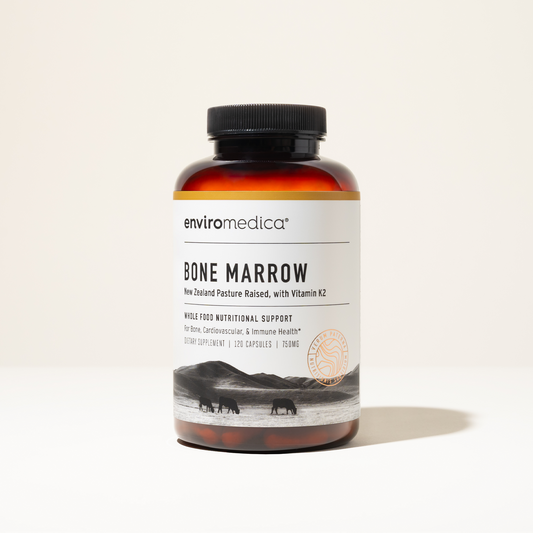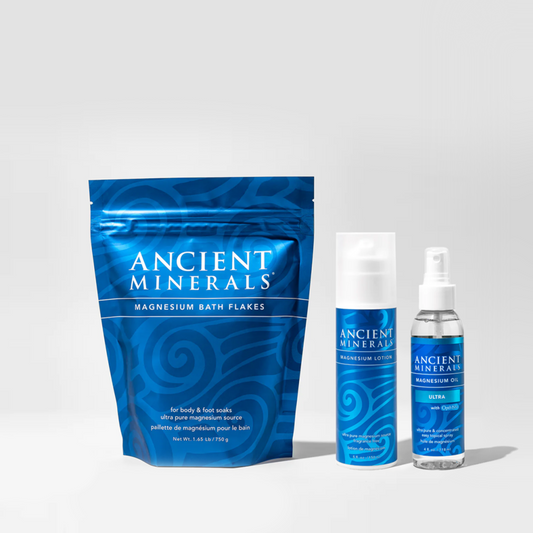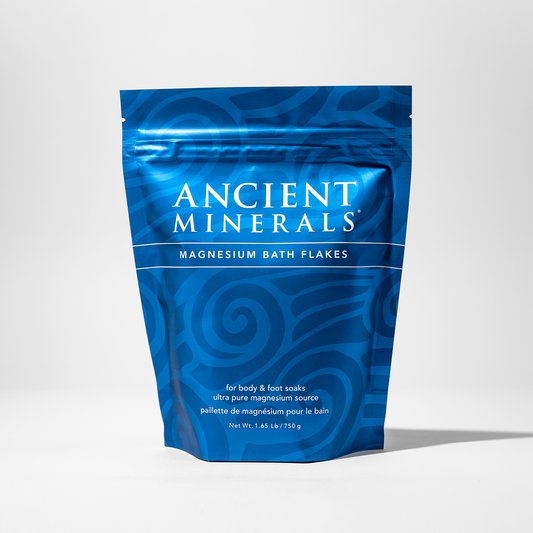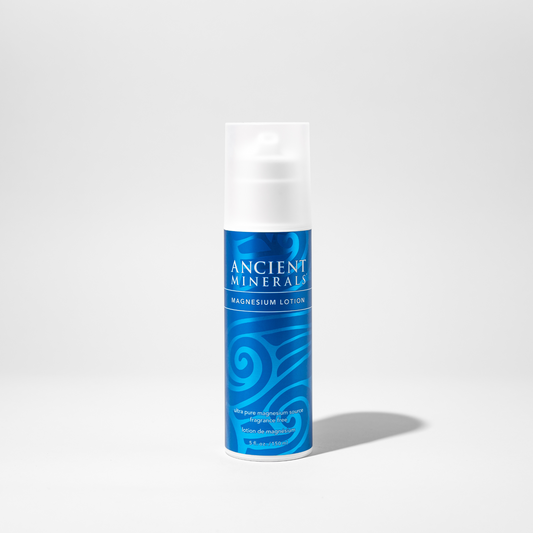Most people are aware that refrigeration increases the shelf life of probiotics. But it’s hard to sort out whether this is true for all probiotics. Are there certain brands which don’t need to be refrigerated – or do all probiotics, regardless of labeling, need to be refrigerated?
Researchers analyzed the contents of 20 store-bought brands and found that 20% of the products contained no viable probiotic bacteria1 at all.
If you are as confused as most about when or when not to refrigerate, and why refrigeration is crucial for some products, read on. We’ll help you sort out the truth in regard to probiotic stability.
Why refrigeration?
The simple answer to the question “Should probiotics be refrigerated?” is “Yes.”
Most of the commercially available strains of probiotics are inherently fragile and must be protected from excess heat. However, several exceptions exist in the case of newer forms of probiotics known as “SBO” (soil-based organism) probiotics, Bacillus probiotics and similar naturally resistant strains.
All probiotics, except those from a select group, are subject to slowly dying off until they reach an environment, such as your intestines, that nurtures their ability to grow. From the moment these bacteria are manufactured they begin the steady process of dying off, which can be expedited by manufacturing methods and any exposure to heat or moisture. In fact, since the most commonly used probiotic bacteria are so fragile, probiotic products are manufactured with the assumption that up to 90% of the bacteria will die before they are ever ingested by the end consumer.
Improper storage is one factor that can cause a loss of bacteria. Very often, the number of colony forming units (CFUs) in a product decreases over time. Manufacturers factor this in when they set a “Best by” date, and build the product with “overage.” If the product is labelled to contain 10 billion CFU, the original content will be 15 billion or more CFU to account for the large number of bacteria that will not be viable once the product is finally consumed.
Studies have demonstrated that the most commonly used probiotic bacteria are extremely fragile, requiring close supervision of their production, delivery, and storage in order to deliver an adequate number of viable (live) bacteria.
The Scientific Journal Immunology and Cell Biology reviewed commonly used probiotic bacteria such as:
- Lactobacillus acidophilus
- casei
- Bifidobacterium bifidum
- adolescentis
- breve
- longum
- Saccharomyces boulardii
Each was found to be too fragile to survive the rigors of manufacturing, transport, storage, and the highly acidic conditions of the intestinal tract. For example, L. acidophilus shows a rapid decline in viability at pH 2.0 (the stomach’s pH is typically even lower, 1.5). Additionally, B. adolescentis and B. breve survive poorly at all pH levels (1.5, 2.0, 2.5 and 3.0) tested.2 Each of these requires complex engineering to preserve the bacteria’s viability and activity.
By selecting better functional probiotic strains and adopting improved methods to enhance survival, including the use of appropriate prebiotics and the optimal combination of probiotics and prebiotics (synbiotics), an increased delivery of viable bacteria in fermented products to the consumers can be achieved.2
The Scientific Journal Immunology and Cell Biology
The above list of common probiotic species fall into a class of probiotics known as “Lactic-Acid Based Bacteria” or LAB probiotics, with the exception of Saccaromyces boulardii. The most common LAB probiotic species are the Lactobacillus and Bifidobacterium strains. Probiotic ingredients that begin with these names, or the abbreviations “L.” or “B.” will be fragile under normal conditions.
Very common elements – heat, moisture, oxygen and light – take a toll on the stability of all strains of Lactobacillus and Bifidobacterium bacteria. If the probiotic bacteria do not survive all of these challenges, and have optimally cold temperatures at critical times, they will not reach the small intestine where they perform their work, and the person ingesting these bacteria will not derive full benefit. This rough road to a probiotic’s final destination is why the chosen bacterial species are so important, as each will react differently to the many threats on the path to its destination.
New scientific developments in probiotic formulation focus on strains of probiotic bacteria that are hardier than those found in the majority of probiotic products. Based on the primary phyla of bacteria found in the gut, Firmicutes, Bacteroidetes, Actinobacteria, and Proteobacteria3, these new “SBO” or spore-forming probiotics are the only notable exceptions, without significant product engineering, to the rule of refrigeration and moisture protection for probiotic survivability.
Natural enemies to probiotics
Why are probiotic supplements so fragile? Four main factors determine the loss of viable cultures over time of a typical LAB-based probiotic.
1. Non-symbiotic bacteria
If these challenges weren’t enough, manufacturers must also battle “the enemy within.” Researchers have reported that L. acidophilus and B. bifidobacteria do not survive in several U.S. yogurt products, due to the presence of another bacteria, L. delbrueckii ssp. bulgaricus, which in effect kills the “good bacteria.4” This lack of cooperation between some species is yet another factor reducing the viability of many probiotic products.
2. Heat
Refrigeration is critical to maintaining the viability of probiotic bacteria.
- At 70˚Farenheit, viability decreases 10-15% per month. Above 80˚Farenheit, the loss is more than doubled.
- Maintaining storage temperatures below 36 -39˚Farenheit increases probiotic survival, specifically L. acidophilus and B. bifidum, however large scale losses must still be anticipated.
In every probiotic culture, “the cell count at the end of incubation must be sufficiently high to allow up to 90% mortality of probiotic bacteria during storage – and yet still leave their number above the desired minimum of 106 CFU/mL viable cells," writes Kaila Kailasapathy, a resercher with the University of Western Sydney in Australia, in Immonolgy & Cell Biology.5
To accommodate this reality, certain companies use cold-temperature shipping. But there is no way to know at the store whether a particular brand of probiotic has been cold-shipped or has been consistently stored in a temperature controlled environment. Warehouse environments vary, so it’s quite possible that products are shipped and stored in less than ideal environments – summer shipping or high temperature locations such as the Southern U.S. Such conditions can expose probiotics to levels of heat that could easily destroy the majority of bacteria in lactic-acid based products.
3. Humidity
Humidity and moisture are a huge problem for probiotic products, as moisture activates the bacteria and essentially starts the process of degradation, since the activation is intended to occur after ingestion. Some manufacturer’s products are sealed at low humidity as they are manufactured, which results in a foil-packed probiotic product which is typically a better choice. Yet, when the product is opened, it is exposed to moisture from the air and the probiotic bacteria begin to deteriorate.
For products that are not foil-packed or otherwise moisture sealed, moisture is a major concern. A few manufacturers have turned to microencapsulation, however, many say that it’s still a challenge to find a microencapsulation system that can adequately protect delicate probiotic bacteria.
I would say that maintaining the stability of probiotic bacteria is one of, if not the most important, issue being worked on by the probiotics industry.
Michael Shahani, director of operations for probiotics supplier Nebraska Cultures Inc.6
An alternative to factory protection for probiotics is the use of aforementioned SBO probiotics such as Bacillus subtilis. These bacteria have naturally adapted to be resilient against both humidity and temperature through a protective organic shield which is not shed until the bacteria reaches its final destination. Thus only Bacillus subtilis and similar spore-forming probiotics can maintain their viability without the use of foil-packs or other expensive microencapsulation techniques.
4. Ravages of manufacturing
One of the primary concerns in probiotic longevity is heat. Too much contact with heat will kill the delicate bacteria, whether the exposure is during manufacture or storage.
Microencapsulation is one technique that attempts to improve the stability of baked or non-refrigerated probiotic food products. In an effort to produce a shelf-stable probiotic nutrition bar, one manufacturer announced that its microencapsulation formula resulted in improved probiotic resistance at temperatures up to 50°Celsius or 122°Farenheit, enabling a fragile Lactobacillus strain to retain 60% of its viability after five months of room temperature storage. According to the manufacturer, this novel technology could improve the durability of probiotics so that products using normally unstable lactic-acid based strains could approach shelf stability at room temperature, without the freeze-drying or refrigeration normally required during transport.
However, industry experts have voiced skepticism, stating that common species like L. acidophilus, L. casei, B. bifidum will always require refrigeration, regardless of these protective measures. In fact, the microencapsulation process itself is known to destroy probiotic bacteria. The concern is that these novel technologies are simply not sufficient to overcome the inherent vulnerability of non-refrigerated acidophilus and Lactobacillus probiotics, and that more resistant species may be the only viable solution.
Probiotic solutions
When looking for a shelf-stable probiotic, it’s important to know about the types of solutions that current products on the market employ to overcome or bypass the need for refrigeration.
Freeze-drying
Some brands use deep-freeze or freeze-drying to protect probiotic viability. Deep-frozen or freeze-dried probiotic cultures involve strict control of water content. It has been shown that, for maximum survival of L. acidophilus in freeze-dried cultures when stored at room temperature, the water level must be less than 0.25 U – which translates to an extremely low moisture content. The problem with this is that the product must then be protected from exposure to moisture, as it will immediately start the degradation of the product. With exposure to moisture or excessive humidity, freeze-dried probiotics will lose viability over time and may lose all viability before the consumer even opens the product.7
More colony forming units (CFU)
Some believe the answer is loading probiotic products with even larger numbers of probiotic bacteria – and simply anticipating that the majority will not survive. Unfortunately, this raises the important concern of knowing the exact dose ingested. How will this practice of “adding more” affect those who have a need for very specific levels and can have problems if they take too much or too little? Will these “mega dose probiotics” carry the potential of harm for certain segments of users?
Symbiotic formulations
Another approach is to select probiotic strains that are naturally compatible with other probiotic strains. SBO probiotics have evolved to be symbiotic and can thrive amid the vast majority probiotic communities, including those that threaten the existence of conventional bacteria such as, L. delbrueckii ssp. bulgaricus.
Inherently viable strains
Scientists are also investigating SBO probiotics because these hardy strains are naturally resilient bacteria and thrive in all environments due to their naturally occurring protective outer covering.
SBO probiotics, naturally shelf-stable
Are there non-refrigerated probiotic products that are safe and effective? One probiotic species that has met these criteria and is naturally shelf stable – with no expensive processing required – is Bacillus subtilis, an “SBO” or “soil-based organism” with a structure similar to a seed. Quality SBO probiotics are based on the microorganisms naturally found in a healthy terrestrial (earth-based) microbiome which are considered linked to the development of a healthy human microbiome.
The protective shell found in this type of probiotic naturally protects the cell’s core until it reaches the desired location at which time the “seed is planted.” This mechanism shows one manner in which probiotic microflora evolved to mutually beneficial relationship within the human body. The endospore’s shell insulates the bacteria’s genetic material from heat, other environmental assaults, and the manufacturing process.
Quality SBO probiotics are naturally resilient, heat stable and remain viable regardless of refrigeration, and without the need for artificial encapsulations or coatings. The ultra-thin shell, naturally present, also preserves the bacterial cells against acidic environments in the stomach and upper intestines due to bile release.
Scientists have reported favorable reviews of the safety and efficacy of Bacillus subtilis. “Compared to the widely used lactic acid bacteria, bacterial spores offer the advantage of a higher survival rate during the acidic stomach passage and better stability during the processing and storage of the food product,” writes researcher Johannes Bader in the journal Beneficial Microbes.8
Lactobacillus and bifidobacteria species, do not have this natural protective shell, therefore they are far more fragile. Significant product engineering is necessary to protect LAB (“lactic-acid based”) probiotics such as these to minimize heat and humidity exposure and safeguard from vulnerability to gastric and bile acids.
Shipping and storage
Do you know if your probiotics have been stored and shipped properly? Do you store them in a refrigerated environment, even when traveling? Could there be a better solution?
The most commonly used probiotics need to be refrigerated – Lactoacidophilus, Bifidobacterium, and Streptococcus.9 Others — Pediococcus, Enterococcus, and yeasts like Saccharomyces, Aspergillus, and Torulopsis – are equally fragile, and require significant protection from temperature extremes throughout the journey from manufacturing to storage to the retail shelf to the consumer – a process that is nearly impossible to control.
Does Terraflora™ Broad Spectrum Synbiotic need to be refrigerated?
Short answer: No. The probiotic bio-complex in Terraflora™ is made up of a sophisticated blend of select Bacillus strains. Selected for their unique characteristics, Bacillus can exist in two forms. Under favorable conditions the bacteria grow in a vegetative form, but when starved of nutrients, they differentiate into a dormant life form known as an “endospore” or simply a “spore”. These spores come alive when introduced to an ideal environment, like the human gut. Terraflora™ is a balanced formulation of a new generation of probiotics— they are inherently resilient, heat-stable, and require no refrigeration.
References
- 1.“Growing Potential.” Nutritional Outlook. N.p., n.d. Web. 08 July 2015. http://www.nutritionaloutlook.com/articles/growing-potential
- 2. Kailasapathy, K., & Chin, J. (2000). Survival and therapeutic potential of probiotic organisms with reference to Lactobacillus acidophilus and Bifidobacterium spp. Immunology and Cell Biology, 78(1), 80–8. doi:10.1046/j.1440-1711.2000.00886.http://www.nature.com/icb/journal/v78/n1/full/icb200012a.html
- 3. Pennisi E. Body’s hardworking microbes get some overdue respect. Science. 2010;330(6011):1619.
- 4. Kailasapathy, K., & Chin, J. (2000). Survival and therapeutic potential of probiotic organisms with reference to Lactobacillus acidophilus and Bifidobacterium spp. Immunology and Cell Biology, 78(1), 80–8. doi:10.1046/j.1440-1711.2000.00886.
- 5. Kailasapathy, K., & Chin, J. (2000). Survival and therapeutic potential of probiotic organisms with reference to Lactobacillus acidophilus and Bifidobacterium spp. Immunology and Cell Biology, 78(1), 80–8. doi:10.1046/j.1440-1711.2000.00886.
- 6. Kailasapathy, K., & Chin, J. (2000). Survival and therapeutic potential of probiotic organisms with reference to Lactobacillus acidophilus and Bifidobacterium spp. Immunology and Cell Biology, 78(1), 80–8. doi:10.1046/j.1440-1711.2000.00886.
- 7. Kailasapathy, K., & Chin, J. (2000). Survival and therapeutic potential of probiotic organisms with reference to Lactobacillus acidophilus and Bifidobacterium spp. Immunology and Cell Biology, 78(1), 80–8. doi:10.1046/j.1440-1711.2000.00886.
- 8. Bader, J., Albin, A., & Stahl, U. (2012). Spore-forming bacteria and their utilisation as probiotics. Beneficial Microbes, 3(1), 67–75. doi:10.3920/BM2011.0039.https://www.ncbi.nlm.nih.gov/pubmed/22348911
- 9. Kailasapathy, K., & Chin, J. (2000). Survival and therapeutic potential of probiotic organisms with reference to Lactobacillus acidophilus and Bifidobacterium spp. Immunology and Cell Biology, 78(1), 80–8. doi:10.1046/j.1440-1711.2000.00886.

